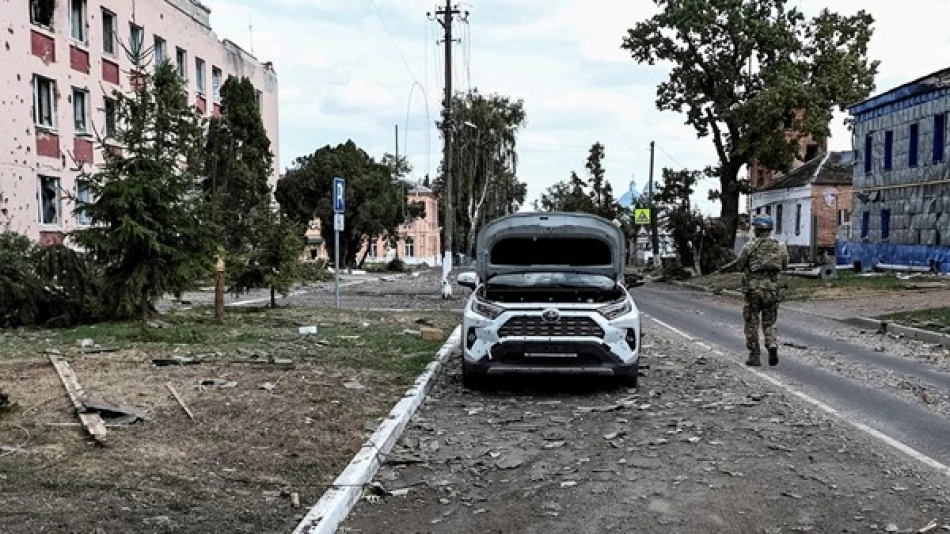
Deadly Attack Strikes Russian Region, Leaving Two Casualties
Ukraine Strikes Russian Border Region as Kursk Remains Flashpoint for Civilian Casualties
A Ukrainian drone attack killed a 52-year-old man and his 13-year-old son in Russia's Kursk region on Saturday, highlighting how the contested border area continues to see deadly strikes against civilians nearly eight months after Ukraine's surprise incursion. The attack in Rylsk district underscores the persistent volatility along Russia's southwestern frontier, where territorial control has shifted multiple times since August 2024.
Fatal Strike in Contested Border Zone
Alexander Khinshtein, governor of Russia's Kursk region, confirmed the deaths occurred when the victims' vehicle caught fire following the drone strike. The attack took place in Rylsk district, a border area located near sections of Kursk that remained under Ukrainian control from August 2024 through March 2025.
The incident represents the latest in a series of cross-border attacks that have plagued the region since Ukraine launched its unexpected ground offensive into Russian territory last summer. While military positions remain the primary targets, civilian casualties continue to mount as both sides employ increasingly sophisticated drone warfare tactics.
Kursk's Strategic Significance in the Conflict
The Kursk region has emerged as one of the war's most dynamic fronts since Ukraine's August 2024 incursion marked the first foreign occupation of Russian territory since World War II. The operation caught Moscow off guard and demonstrated Ukraine's ability to project force beyond its borders, fundamentally altering the conflict's geographic scope.
Shifting Control and Ongoing Instability
Ukraine's months-long occupation of parts of Kursk served multiple strategic purposes: relieving pressure on other fronts, creating a bargaining chip for potential negotiations, and forcing Russia to divert resources to defend its own territory. The eventual Russian recapture of these areas by March 2025 has not eliminated the region's strategic importance or ended cross-border strikes.
Civilian Impact of Cross-Border Warfare
Saturday's attack reflects the broader challenge of protecting non-combatants in border regions where military and civilian infrastructure often overlap. The use of drones against vehicles traveling in border areas has become increasingly common, as both sides seek to disrupt supply lines and movement while minimizing their own casualties.
For residents of Kursk and similar border regions, the conflict has transformed daily life into a constant security calculation. The death of a father and son traveling by car illustrates how routine activities have become potentially fatal in areas where the front lines remain fluid and unpredictable.
Implications for Regional Security
The continued strikes in Kursk suggest that neither side views the current territorial arrangements as permanent. Ukraine's ability to conduct regular drone operations deep into Russian territory demonstrates the limits of Moscow's air defense systems and raises questions about the Kremlin's capacity to protect its own population.
For Ukraine, maintaining pressure on Russian border regions serves both military and psychological purposes, keeping Moscow's forces dispersed while demonstrating that the war's costs extend beyond Ukraine's borders. However, such operations also risk escalating the conflict and potentially drawing in additional international actors concerned about regional stability.
 Layla Al Mansoori
Layla Al Mansoori







